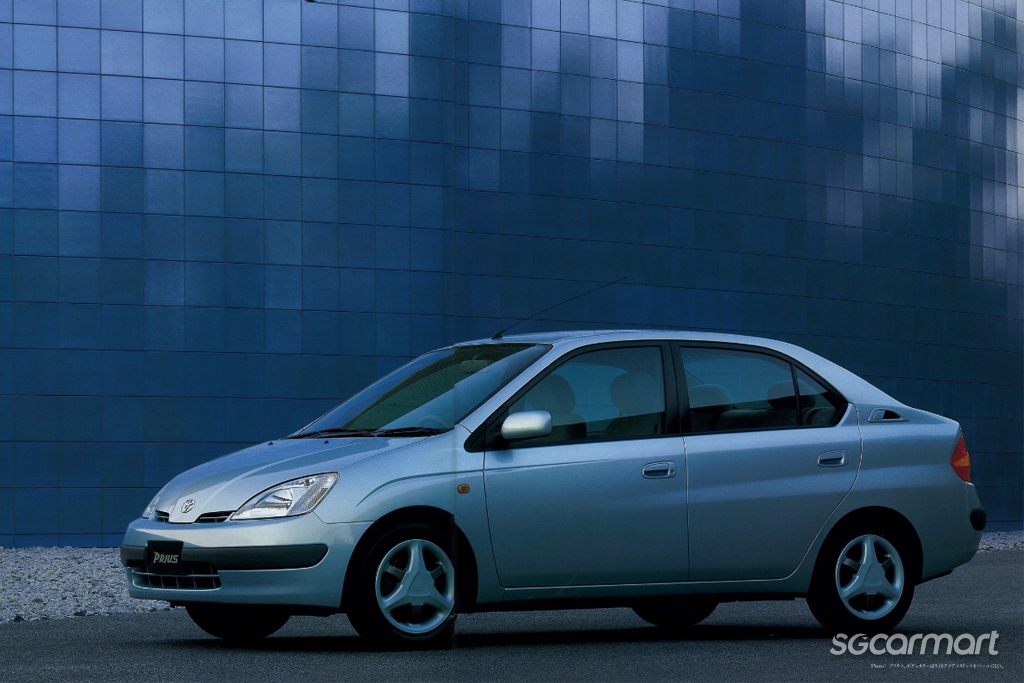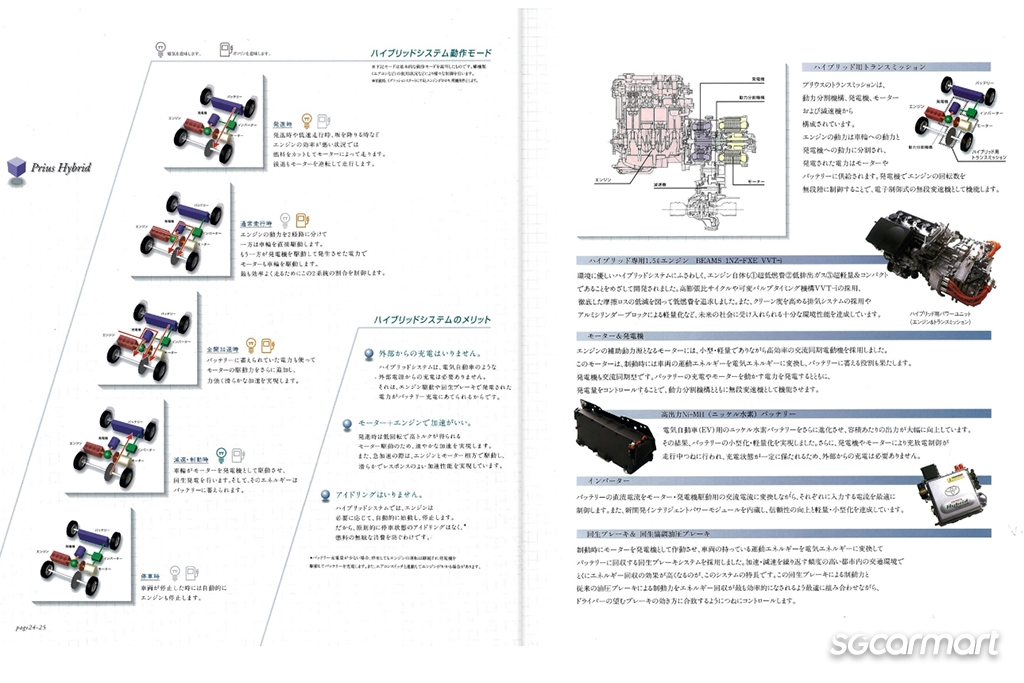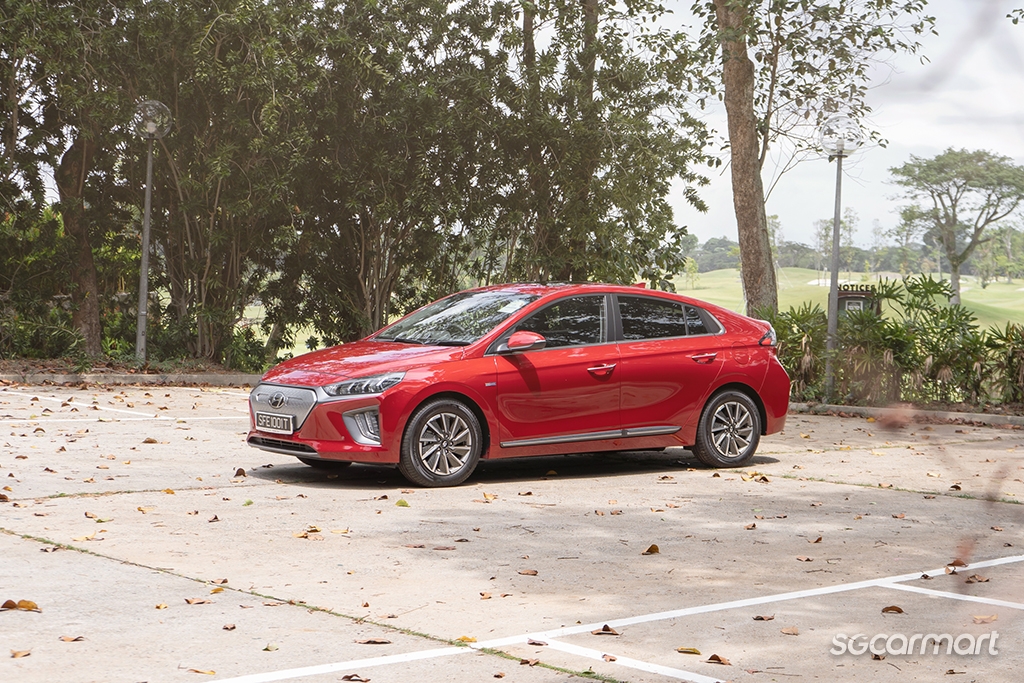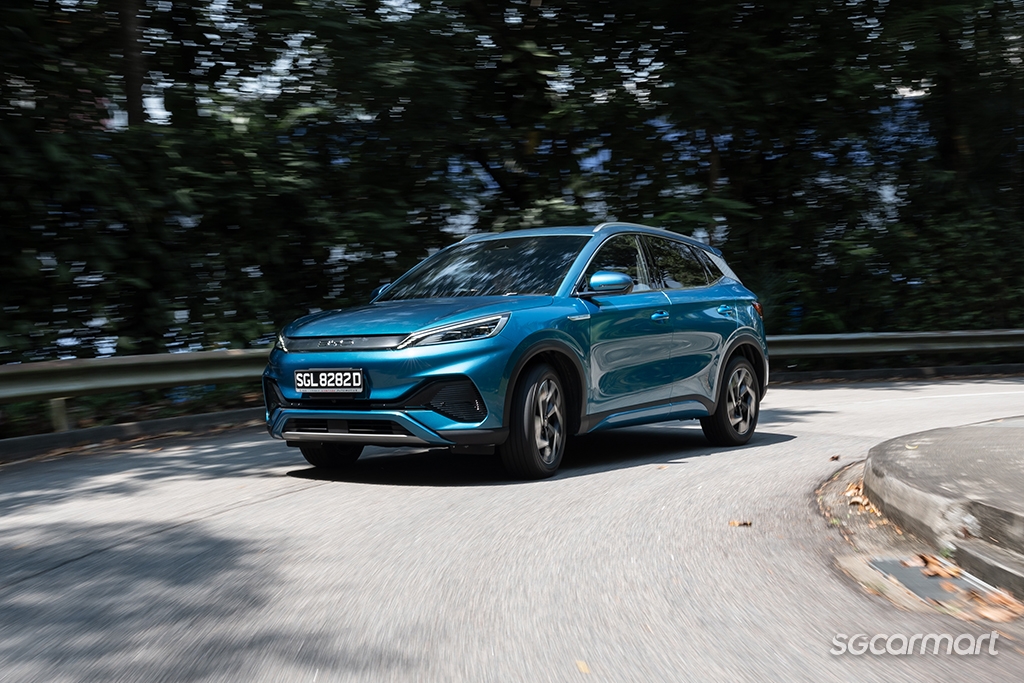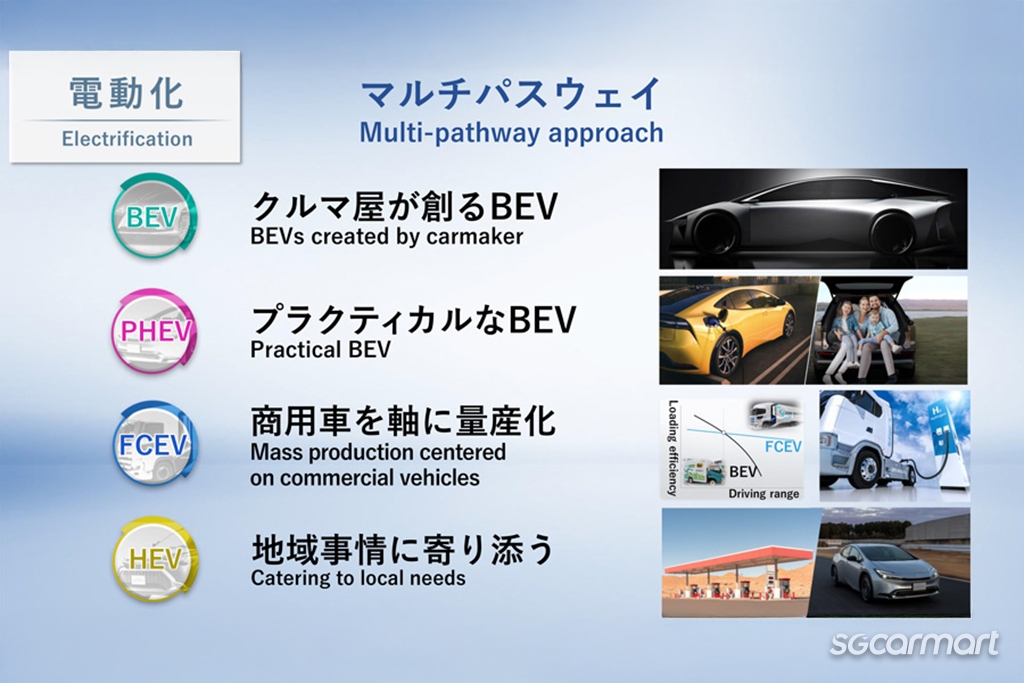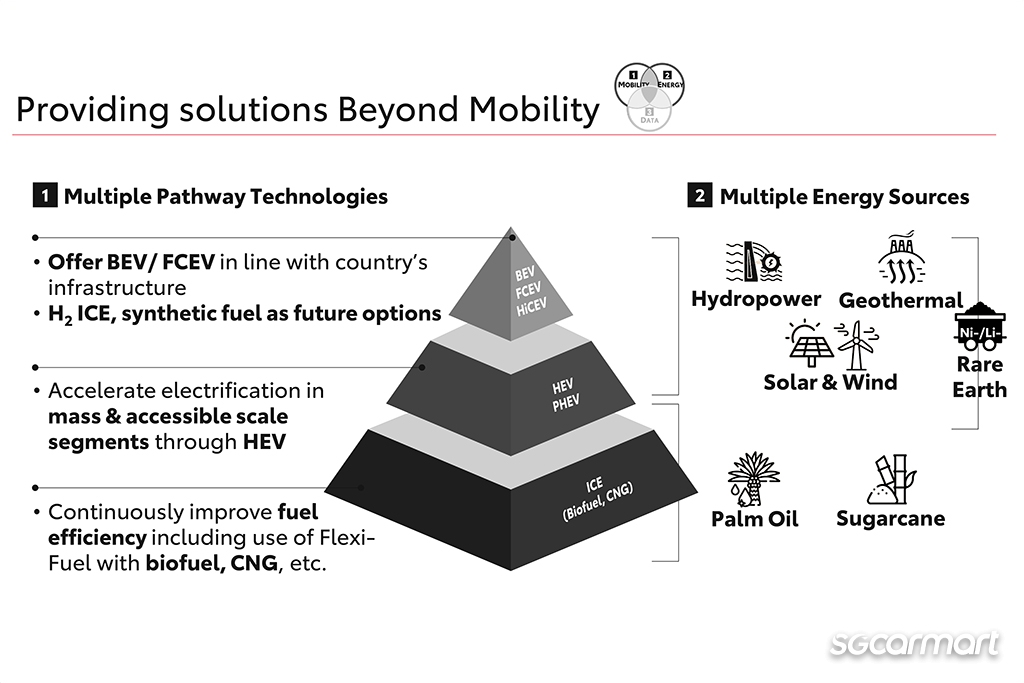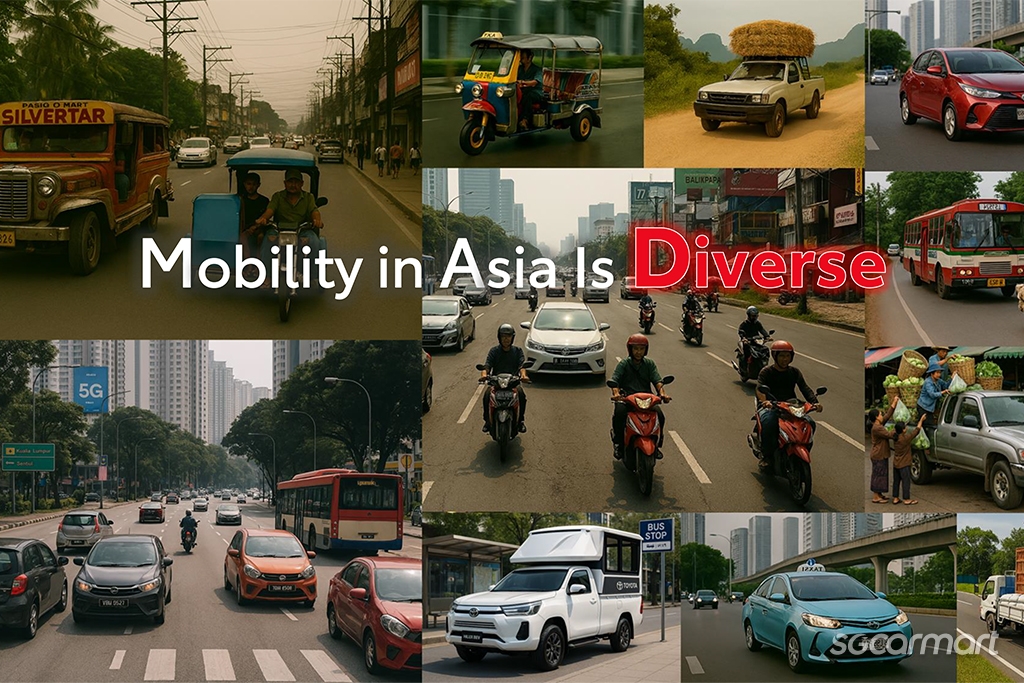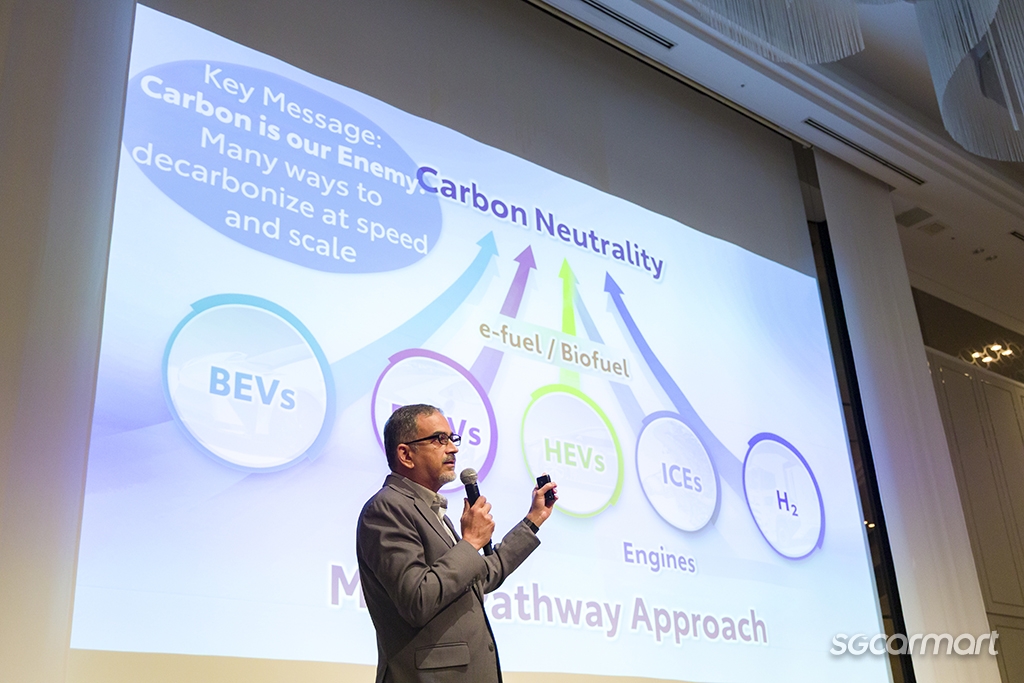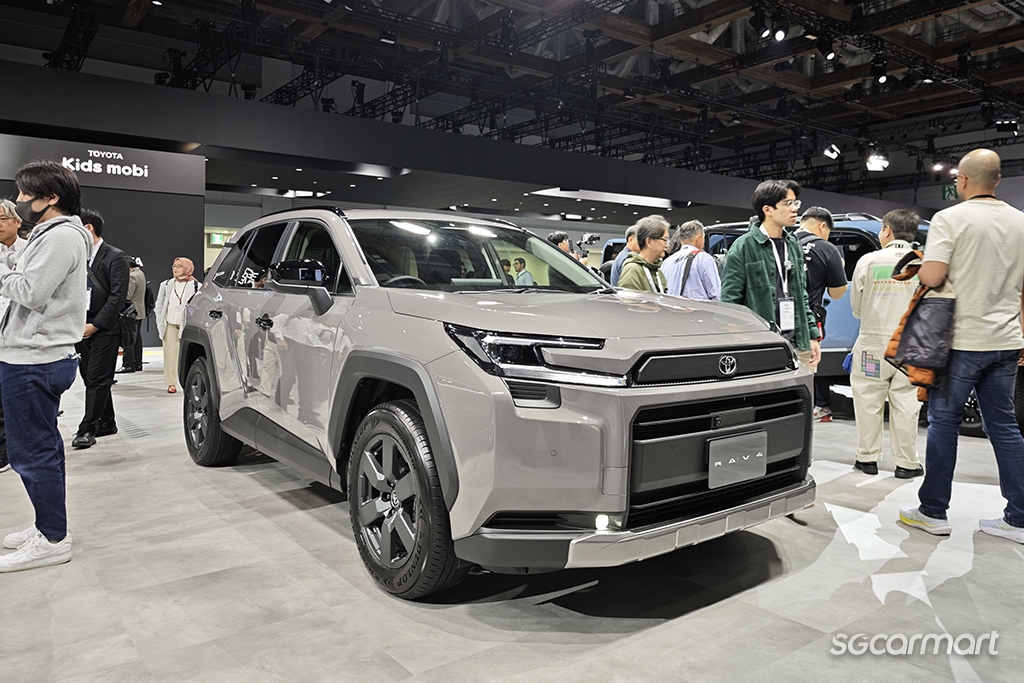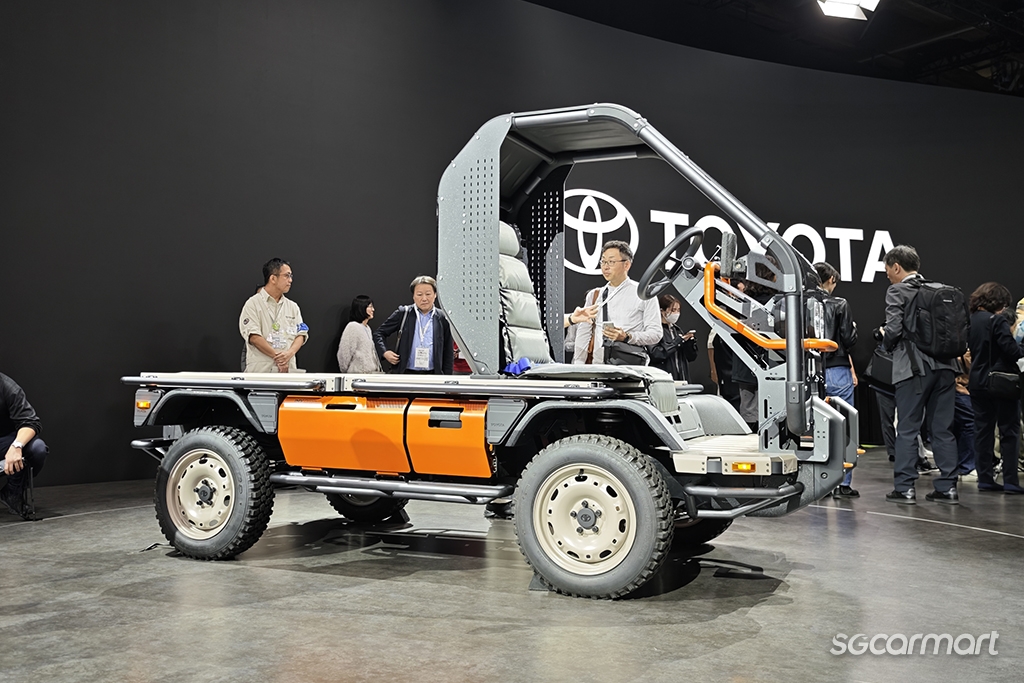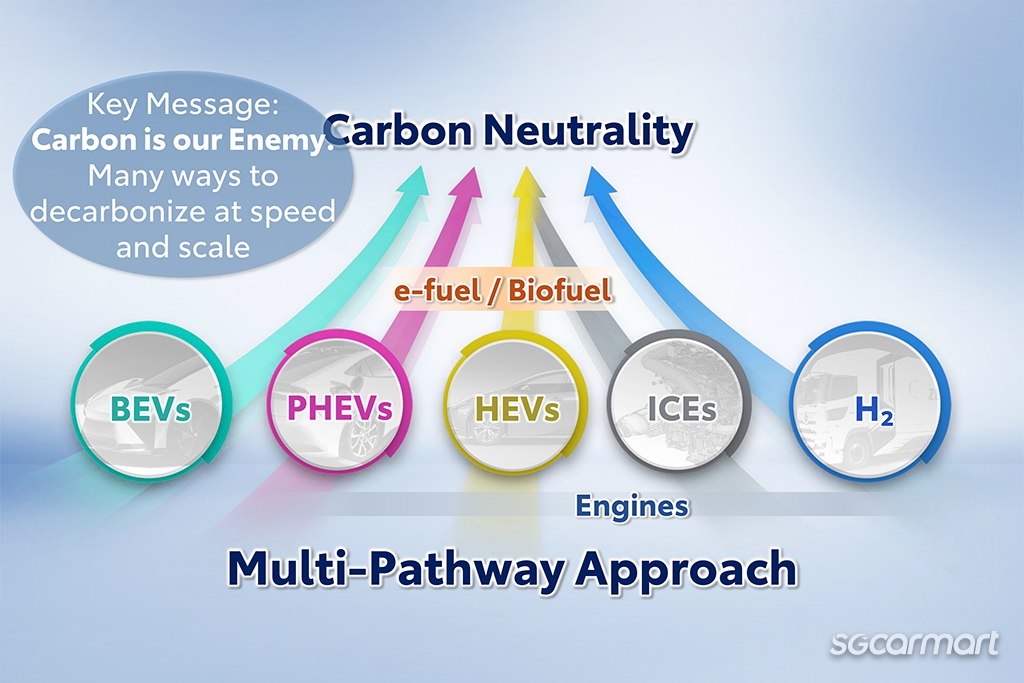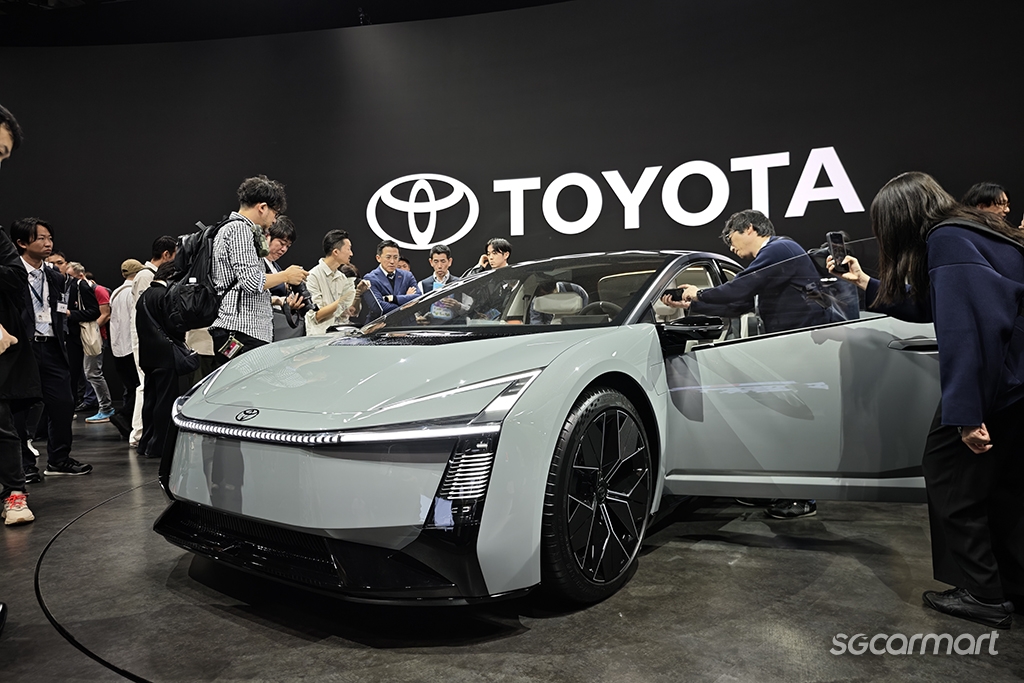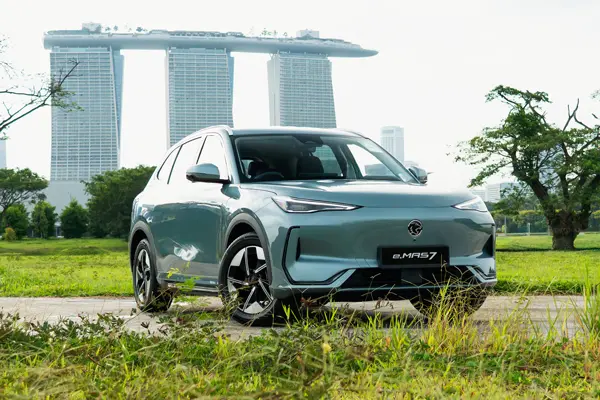Multi-Pathway approach: Toyota was always right
10 Nov 2025|62 views
Climate change and global warming is a phenomenon that everyone is worried about, and a large proponent of this issue is due to greenhouse gases that are created from the combustion of fossil fuels.
For the sake of the world that we live in, environmentally friendly alternatives are always being pursued. And in the case of vehicles, various methods have been explored throughout history, including electric vehicles, as well as hybrid powertrains that combine electrification and internal combustion engines.
Toyota was a first mover when it comes to environmentally-friendly vehicles - the Prius was the world's first mass-produced hybrid vehicle
In 1997, Toyota introduced the first mass-produced hybrid vehicle, the Prius. By combining an internal combustion engine with an electric motor, the Prius was both fuel efficient and environmentally friendly - its official fuel consumption figure was around 20km/L.
While the development of electric vehicles actually predates internal combustion engines, it wasn't until the mainstream adoption of lithium-ion batteries that they were perceived as a viable alternative - early batteries were just too heavy and energy density was insufficient.
The popularity of EVs started to rise in the late 2010s to early 2020s, with many carmakers gravitating towards electric cars
The rise of the mainstream adoption of EVs
Although EV adoption has been steadily increasing, a boom was observed in the late 2010s to early 2020s, with an influx of Chinese EV makers and with many other carmakers pledging on a complete transition to electric vehicles in the near future as the plan.
Instead of going all in on EVs, Toyota announced its 'Multi-Pathway' approach during the 2023 Japan Mobility Show, which included hybrids, plug-in hybrids and hydrogen fuel cell vehicles
Toyota, however, announced its 'Multi-Pathway Approach' during the 2023 Japan Mobility Show: "In the area of electrification, we will continue to pursue a 'Multi-Pathway Approach', including the introduction of optimal powertrains for each region."
At a time when most brands were hedging their bets on the EV train, Toyota chose to spread its efforts across the various electrification options - Battery Electric Vehicles, Plug-in Hybrids, Fuel Cell EVs (Hydrogen Fuel Cell), and Hybrid Vehicles.
As a result, many media outlets and stakeholders within the automotive industry wondered if Toyota was slow to react and adverse to change in this highly competitive climate - especially when it was a first mover who invested so much in hybrid technology.
Not a wilful resistance to change
Without any tailpipe emissions, it might seem that full electric vehicles would be the clear choice in the war against damaging carbon footprints.
However, Toyota took a different approach to the goal of achieving carbon neutrality without going all in on EVs. And unlike what some assumed, it wasn't just due to Toyota's involvement in hybrid technology.
Toyota understood the nuances of the various markets that it was operating in, and that a one-size-fits-all approach will be far from optimal. The vehicular needs, infrastructure, traffic conditions, and energy sources of each region is unique. And pushing EVs in regions where EV chargers aren't readily available, or where electricity is generated through dirty means (burning fossil fuel), wouldn't make sense, nor help the environment.
In fact, for regions as such, hybrid vehicles that offer exceptional range and sips on fuel makes far more sense.
Looking at the big picture - for Asia in particular
Two years on, Toyota has just reiterated its 'Multi-Pathway Approach' at the 2025 Japan Mobility Show.
By delivering accessible low and zero-emission mobility solutions, Toyota aims to address the diverse needs of Asian customers under three guiding principles: 'Best in Town', 'Customer Comes First', and 'Start by Doing'.
With 'Best in Town', Toyota focuses on long-term contribution over short-term goals. It believes not just in the development of products - Chairman Akio Toyota stated, "We cannot make customers happy by just promoting the total number of vehicles."
Toyota's 'Best in Town', 'Customer Comes First' and 'Start by Doing' ideologies guide the brand to work closely with each of its markets, creating vehicles that suit the demand and fulfil mobility needs while reducing CO2 emissions
This strategy emphasises delivering the best products and services that meet each Asian market's unique mobility needs and societal demands. From the supply chain to the actual product, Toyota wants to develop not just products, but an entire ecosystem, which will ensure employment and human development. The brand also emphasised its decades of presence in the various regions.
The 'Customer Comes First' ideology understands that a vehicle is more than just an object - it wants to create vehicles that give each customer a special feeling. Toyota wants to create vehicles that drivers will aspire to own, and at the same time is beneficial to the environment. This is also the reason for Toyota's Multi-Pathway approach to Carbon Neutrality, which focuses on providing customers with a choice of sustainable solutions.
With 'Start by Doing', Toyota is taking immediate action to reduce CO2 emissions and to promote mobility for all with various initiatives and projects. This includes the exploration of new mobility solutions, as well as energy and data solutions. For example, it collaborates with partners to improve logistic efficiency through data-driven initiatives.
Toyota's plan include the acceleration of electrification in mass and accessible segments, which means offering the appropriate powertrain according to each region
A different perspective on achieving carbon neutrality
Toyota's multi-pathway approach seeks a holistic solution on the path to carbon neutrality. It seeks to improve fuel efficiency when it comes to the use of fossil fuels, while exploring flex-fuels such as biofuel. It also aims to accelerate electrification in mass and accessible scale segments through hybrid vehicles, while offering electric vehicles and hydrogen fuel cell vehicles in the appropriate countries.
Instead of trying to sell electric vehicles to regions that aren't ready (resulting in subpar adoption), Toyota's plan to increase electrification through hybrid and plug-in hybrid vehicles could prove to be more effective.
The recent EV boom has also resulted in surging demand for lithium. Toyota identified this concern and presented an interesting perspective: If lithium supply were finite, it would make sense to delegate these resources more effectively.
And in the case of vehicles, Toyota conveyed the message with a case of replacing 100 existing ICE vehicles with more environmentally friendly options.
The battery capacity of a singular BEV (bZ4X) is equivalent to five PHEV (Prius), or 55 HEVs (Corolla Cross), or 92 small HEVs (Yaris Cross). What Toyota is putting into perspective is that with the same amount of lithium batteries, many more hybrids and plug-in hybrids could be produced, and result in a more effective carbon reduction than if only one vehicle out of the 100 was replaced with a BEV.
All these perspectives allowed us to better understand Toyota's Multi-Pathway Approach, and it does make plenty of sense. In fact, many of the brands that were originally in favour of heading towards a complete BEV future are now working on hybrids and plug-in hybrids.
It seems that Toyota has been right all along, and it continues to be.
Climate change and global warming is a phenomenon that everyone is worried about, and a large proponent of this issue is due to greenhouse gases that are created from the combustion of fossil fuels.
For the sake of the world that we live in, environmentally friendly alternatives are always being pursued. And in the case of vehicles, various methods have been explored throughout history, including electric vehicles, as well as hybrid powertrains that combine electrification and internal combustion engines.
Toyota was a first mover when it comes to environmentally-friendly vehicles - the Prius was the world's first mass-produced hybrid vehicle
In 1997, Toyota introduced the first mass-produced hybrid vehicle, the Prius. By combining an internal combustion engine with an electric motor, the Prius was both fuel efficient and environmentally friendly - its official fuel consumption figure was around 20km/L.
While the development of electric vehicles actually predates internal combustion engines, it wasn't until the mainstream adoption of lithium-ion batteries that they were perceived as a viable alternative - early batteries were just too heavy and energy density was insufficient.
The popularity of EVs started to rise in the late 2010s to early 2020s, with many carmakers gravitating towards electric cars
The rise of the mainstream adoption of EVs
Although EV adoption has been steadily increasing, a boom was observed in the late 2010s to early 2020s, with an influx of Chinese EV makers and with many other carmakers pledging on a complete transition to electric vehicles in the near future as the plan.
Instead of going all in on EVs, Toyota announced its 'Multi-Pathway' approach during the 2023 Japan Mobility Show, which included hybrids, plug-in hybrids and hydrogen fuel cell vehicles
Toyota, however, announced its 'Multi-Pathway Approach' during the 2023 Japan Mobility Show: "In the area of electrification, we will continue to pursue a 'Multi-Pathway Approach', including the introduction of optimal powertrains for each region."
At a time when most brands were hedging their bets on the EV train, Toyota chose to spread its efforts across the various electrification options - Battery Electric Vehicles, Plug-in Hybrids, Fuel Cell EVs (Hydrogen Fuel Cell), and Hybrid Vehicles.
As a result, many media outlets and stakeholders within the automotive industry wondered if Toyota was slow to react and adverse to change in this highly competitive climate - especially when it was a first mover who invested so much in hybrid technology.
Not a wilful resistance to change
Without any tailpipe emissions, it might seem that full electric vehicles would be the clear choice in the war against damaging carbon footprints.
However, Toyota took a different approach to the goal of achieving carbon neutrality without going all in on EVs. And unlike what some assumed, it wasn't just due to Toyota's involvement in hybrid technology.
Toyota understood the nuances of the various markets that it was operating in, and that a one-size-fits-all approach will be far from optimal. The vehicular needs, infrastructure, traffic conditions, and energy sources of each region is unique. And pushing EVs in regions where EV chargers aren't readily available, or where electricity is generated through dirty means (burning fossil fuel), wouldn't make sense, nor help the environment.
In fact, for regions as such, hybrid vehicles that offer exceptional range and sips on fuel makes far more sense.
Looking at the big picture - for Asia in particular
Two years on, Toyota has just reiterated its 'Multi-Pathway Approach' at the 2025 Japan Mobility Show.
By delivering accessible low and zero-emission mobility solutions, Toyota aims to address the diverse needs of Asian customers under three guiding principles: 'Best in Town', 'Customer Comes First', and 'Start by Doing'.
With 'Best in Town', Toyota focuses on long-term contribution over short-term goals. It believes not just in the development of products - Chairman Akio Toyota stated, "We cannot make customers happy by just promoting the total number of vehicles."
Toyota's 'Best in Town', 'Customer Comes First' and 'Start by Doing' ideologies guide the brand to work closely with each of its markets, creating vehicles that suit the demand and fulfil mobility needs while reducing CO2 emissions
This strategy emphasises delivering the best products and services that meet each Asian market's unique mobility needs and societal demands. From the supply chain to the actual product, Toyota wants to develop not just products, but an entire ecosystem, which will ensure employment and human development. The brand also emphasised its decades of presence in the various regions.
The 'Customer Comes First' ideology understands that a vehicle is more than just an object - it wants to create vehicles that give each customer a special feeling. Toyota wants to create vehicles that drivers will aspire to own, and at the same time is beneficial to the environment. This is also the reason for Toyota's Multi-Pathway approach to Carbon Neutrality, which focuses on providing customers with a choice of sustainable solutions.
With 'Start by Doing', Toyota is taking immediate action to reduce CO2 emissions and to promote mobility for all with various initiatives and projects. This includes the exploration of new mobility solutions, as well as energy and data solutions. For example, it collaborates with partners to improve logistic efficiency through data-driven initiatives.
Toyota's plan include the acceleration of electrification in mass and accessible segments, which means offering the appropriate powertrain according to each region
A different perspective on achieving carbon neutrality
Toyota's multi-pathway approach seeks a holistic solution on the path to carbon neutrality. It seeks to improve fuel efficiency when it comes to the use of fossil fuels, while exploring flex-fuels such as biofuel. It also aims to accelerate electrification in mass and accessible scale segments through hybrid vehicles, while offering electric vehicles and hydrogen fuel cell vehicles in the appropriate countries.
Instead of trying to sell electric vehicles to regions that aren't ready (resulting in subpar adoption), Toyota's plan to increase electrification through hybrid and plug-in hybrid vehicles could prove to be more effective.
The recent EV boom has also resulted in surging demand for lithium. Toyota identified this concern and presented an interesting perspective: If lithium supply were finite, it would make sense to delegate these resources more effectively.
And in the case of vehicles, Toyota conveyed the message with a case of replacing 100 existing ICE vehicles with more environmentally friendly options.
The battery capacity of a singular BEV (bZ4X) is equivalent to five PHEV (Prius), or 55 HEVs (Corolla Cross), or 92 small HEVs (Yaris Cross). What Toyota is putting into perspective is that with the same amount of lithium batteries, many more hybrids and plug-in hybrids could be produced, and result in a more effective carbon reduction than if only one vehicle out of the 100 was replaced with a BEV.
All these perspectives allowed us to better understand Toyota's Multi-Pathway Approach, and it does make plenty of sense. In fact, many of the brands that were originally in favour of heading towards a complete BEV future are now working on hybrids and plug-in hybrids.
It seems that Toyota has been right all along, and it continues to be.
Thank You For Your Subscription.

















